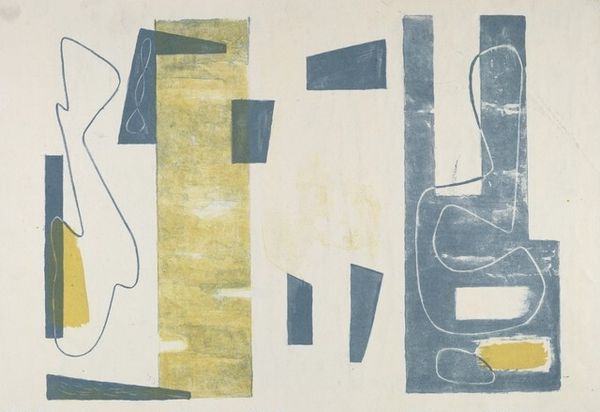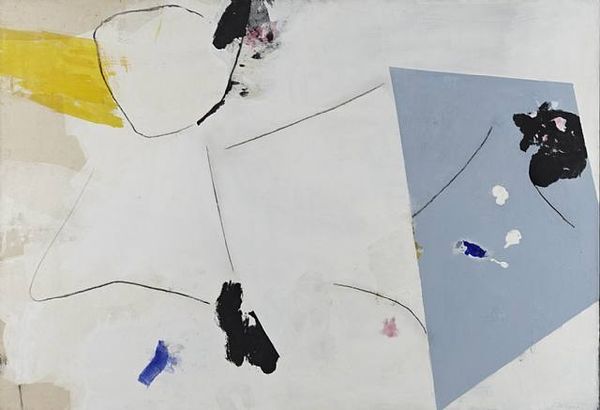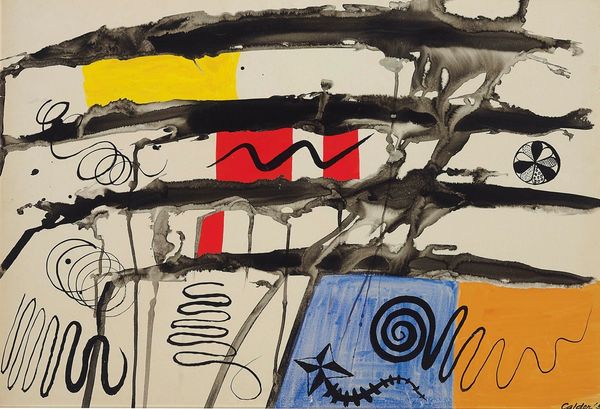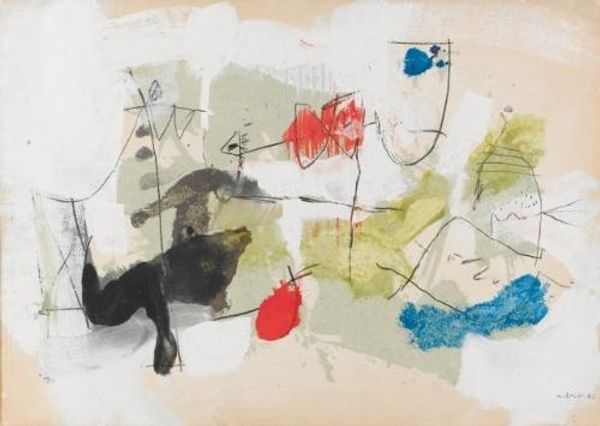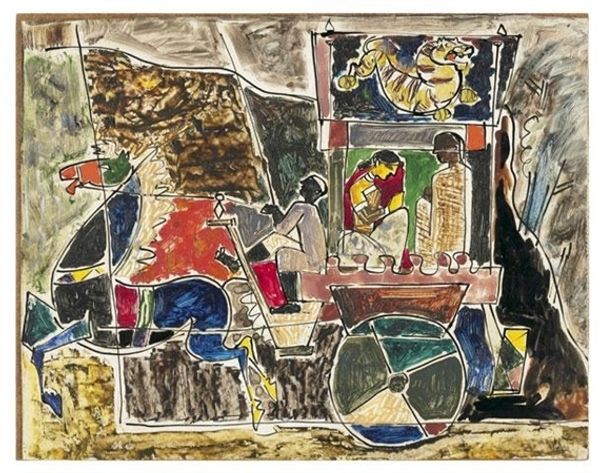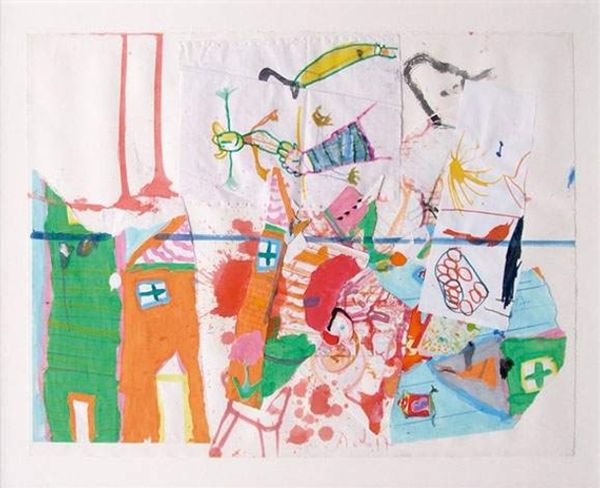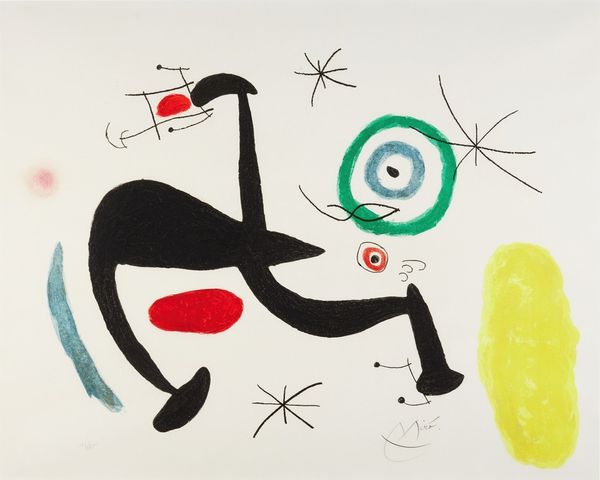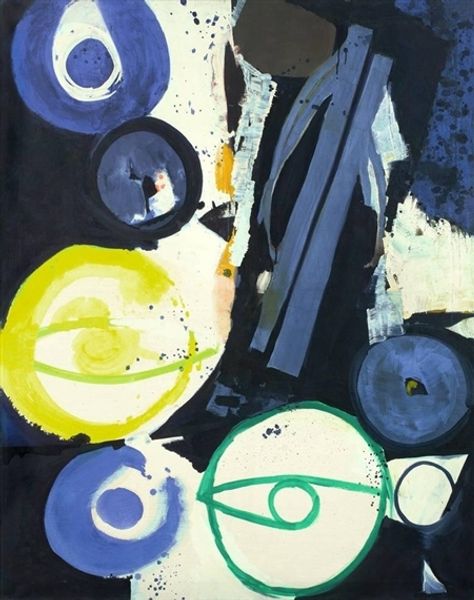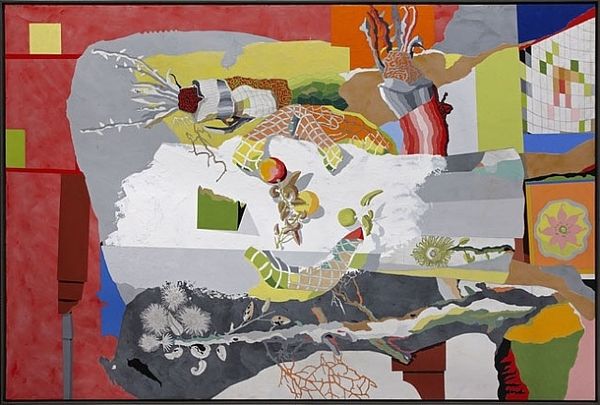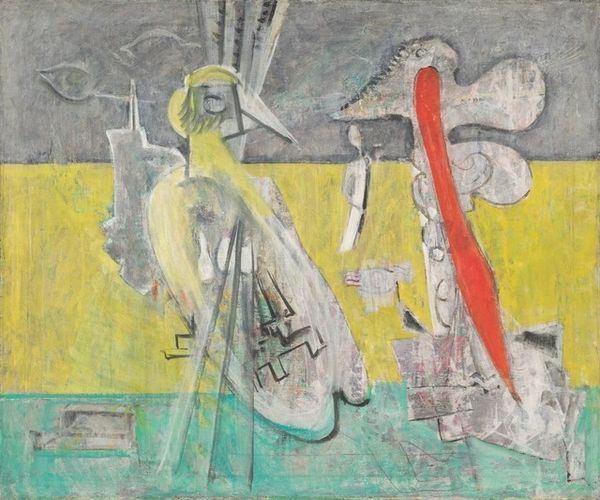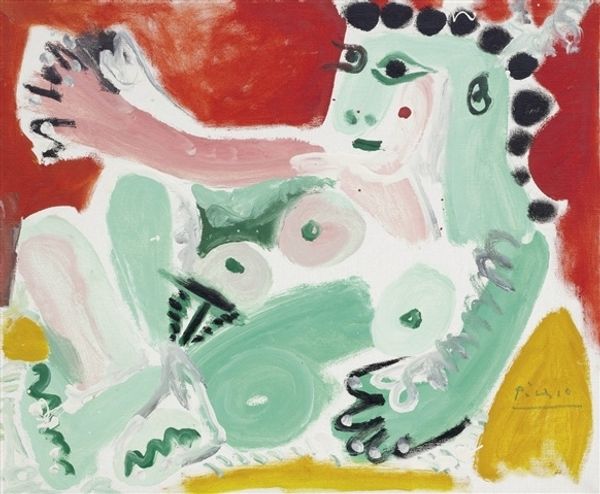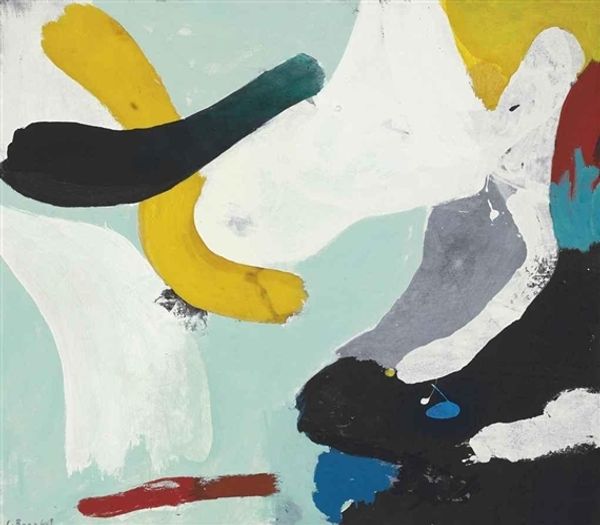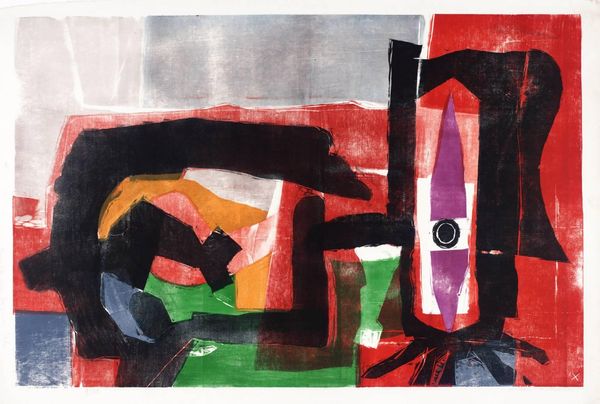
Copyright: Piroska Szanto,Fair Use
Curator: Piroska Szanto’s 1966 mixed-media work, "Clock in Szentendre," offers a fascinating window into the anxieties of post-war Hungarian society. Editor: It’s jarring, isn’t it? All these rough edges and muted colors, broken only by these sharp yellows and the ghostly face… the thing almost seems unfinished. Curator: The seeming incompleteness, the rawness, is exactly the point. Consider Hungary at this time, grappling with rapid industrialization under Soviet influence, an uncertain national identity further damaged after WWII. Editor: So the material chaos mirrors the societal turmoil? Is the title a pointer, referencing time’s march despite any of that chaos? And look at the mixed media itself… Is this some high-art grappling with street art in some kind of uneasy coalition, the paste-up against the traditional painting? Curator: Precisely! There's a deliberate democratization of the artistic process. Szanto blurs the line between fine art and popular culture. And I find it quite thought provoking to examine the way the rise of street art offers subversive political possibilities when murals like these were embraced by resistance groups around the world. Editor: That clock motif is interesting, almost like time itself is fracturing with all of the buildings. Are these really renderings of Szentendre architecture or some other industrialised metropolis? Because if this represents this city, that would create some real meaning through the materials and subject matter. The social commentary makes it worthwhile as the layers and colours convey it all so well. Curator: Exactly! Szanto challenges traditional notions of progress by emphasizing a fragmented, almost decaying urban landscape, which may reflect Szentendre but feels increasingly universal. A timely, poignant piece indeed, using the weight of history and material for an expressive whole. Editor: Makes me reconsider the materials used - perhaps its scrappiness hints at post-war resourcefulness but also critiques imposed uniformity with how the media is distributed.. I now understand that even supposed disorder communicates something deliberately. Curator: A final question is that, how can museums promote socially conscious art like this, that speaks for those experiencing historical turmoil? Editor: Or conversely, how should street artists and the resistance movement see the place and value that an art history and collection place to them?
Comments
No comments
Be the first to comment and join the conversation on the ultimate creative platform.
